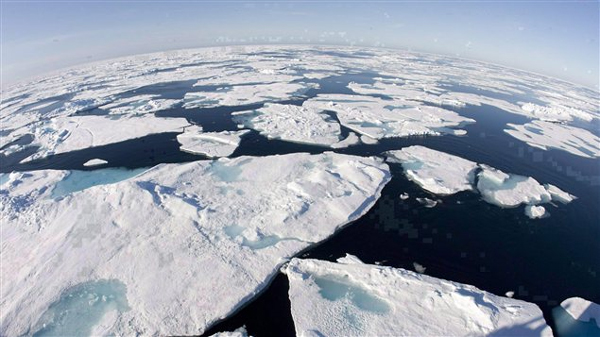
It’s been a chilly winter here in the Interior and elsewhere around the state. But for the Arctic Ocean, it’s been one long warm spell. That’s led to another record-low year for formation of Arctic winter sea-ice cover.
Experts with the National Snow and Ice Data Center say formation of sea ice around the Arctic Ocean probably petered out about two weeks ago. On Wednesday, they finally declared that the extent of sea-ice cover on the Arctic Ocean has grown as much as it’s going to this year.
Mark Serreze is a senior research scientist with the Snow and Ice Data Center.
“What we have now is what we call the lowest maximum on record,” Serreze said.
Serreze said well-above-average warmth over the Arctic Ocean since fall has led to well-below-average sea-ice formation. So much so that the center declared this year’s Arctic sea-ice maximum extent was the lowest in 38 years, since satellite monitoring began.
“Part of what’s going on is it was so darn warm this winter over the Arctic Ocean, especially out on the Atlantic side,” Serreze said.
Center officials say the sea ice probably reached its maximum extent on March 7th, when it covered about 5-and-a-half-million square miles of the Arctic Ocean, including portions of the Bering Sea that lie south of the Arctic Circle. That’s about 470,000 square miles less than the 38-year average. And it’s about 37,000 square miles less than the 2015 maximum extent, the previous record-setting low. 2016 set the third-lowest maximum extent on record.
“This is the third year we’ve seen these extreme low values of sea ice,” Serreze said.
The center said it’s been a warm fall and winter for the Arctic Ocean, with temperatures averaging 4-and-a-half-degrees Fahrenheit above the norm. The air over the Chukchi Sea northwest of Alaska and the Barents Sea north of Scandinavia was even warmer, averaging around 9 degrees above the norm.
“And so that prevented sea ice from growing, in part,” Serreze said. “And it’s looks like we’ve probably got a lot of very thin ice about there.”
Serreze said Arctic sea ice is already beginning to melt and recede, setting the stage for a very low sea-ice minimum extent that the center will declare in September.
“So we’re starting the melt season in a deep hole right now,” Serreze said. “And we’ll see how things work out this spring and summer, but I’m expecting we’re going to have a very, very low September extent.”
Serreze said seasonal weather conditions around the Arctic will determine whether the minimum sea-ice extent will set another record. He said the minimum is the more important and telling metric.
“That’s the one that really matters in the end,” Serreze said. “And what we’re seeing is that September extent is going down quite quickly right now.”
Serreze said the polar ice cap won’t last long if the region continues to warm at this rate.
“We are on course sometime in the next few decades, maybe even earlier, to have summers in the Arctic where, you go up there at the end of August, say, and there’s no ice at all,” Serreze said.
Serreze said that means, aside from some scattered icebergs and clusters of pack ice, the view from space in the fall of around 2040, will be of a blue Arctic Ocean.
Tim Ellis is a reporter at KUAC in Fairbanks.




